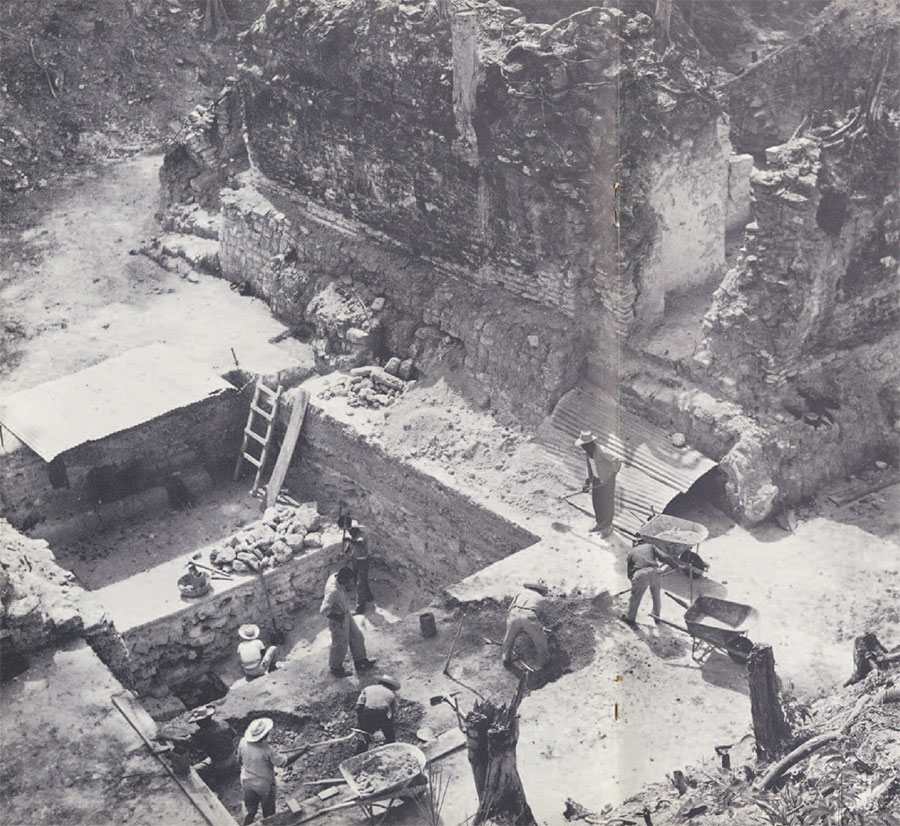
What is it that motivates anticipation of a rich tomb as the trench is cut further and deeper back in time? The excavator knows the lure and now and then stops to ask himself the values to be gotten from the elusive tomb, from the rotted bones, the things worn by and later deposited with someone of another people and world than ours. On the heat struck North Acropolis of Tikal, Guatemala, we and our associates desperately wanted to find deep in our excavation a tomb that would give us a glimpse of what, at one point in time, was current, valued, and pertinent to one individual who once commanded and controlled the site which has so preoccupied us since 1956. In April of 1962, fifty-five feet down in our great trench through the temple-rich North Acropolis, we found what we term Burial 85, a rich interment and in fact the oldest of such sumptuousness yet recorded in the Maya lowlands. Its discovery came late in the season (as too often important things do).
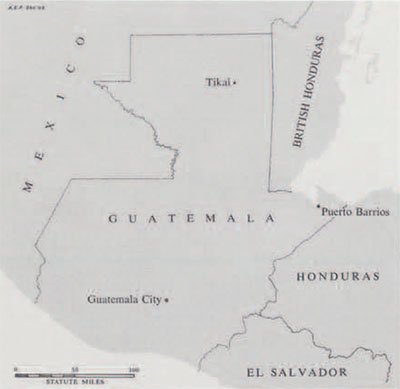
To go back to the beginning, the North Acropolis work in a sense was begun in 1958 (see “Shook, “The Temple of the Red Stela,” Expedition Vol. 1, No. 1), but it was not until 1960 that important excavation was started on the Acropolis proper. This massive construction, really a great platform supporting eight temples and fronted directly by three more, was chosen for major work because it gave most promise of having been the end product, by around A.D. 600, of a long complex growth. By probing its levels of growth, we might encounter the very early beginnings of ceremonialism and architectural settings that emerged during Classic times (A.D. 300-900) as the outstanding features of lowland Maya life. A common and proper query has been, How old is Tikal? A deep cut into the high North Acropolis might reveal vestiges of earliest occupation, with the appearance on higher Acropolis levels of increasingly complex buildings, climaxing about A.D. 200-300 with the formally arranged, varied temples of Early Classic times. The archaeologically typical elements of such times were the massive, elaborately decorated buildings, the corbelled vault, the stela-altar cult, the cached offerings of exotically chipped stones, and, finally, polychrome pottery. But did these elements appear suddenly around A.D. 300 at Tikal? Or did they perhaps have earlier beginnings which could be exposed only by a long-term excavation? When and where did the elements commonly identifiable as lowland Classic Maya originate?
The problem of Tikal’s origins is really part of a much larger one. Was Maya lowland culture an exotic, tropically nurtured development with its own roots, non-expansive, remote, and resistant to influence? Did it, like other Mesoamerican cultures, grow independently as a shoot from some temporally deep cultural stratum common to all? Or did the lowland Maya in their rain forests take this and that foreign strain, then combine and recombine them, here and there inventing something of their own, to produce the strange, extravagant world in which Tikal, we believe, so long dominated?
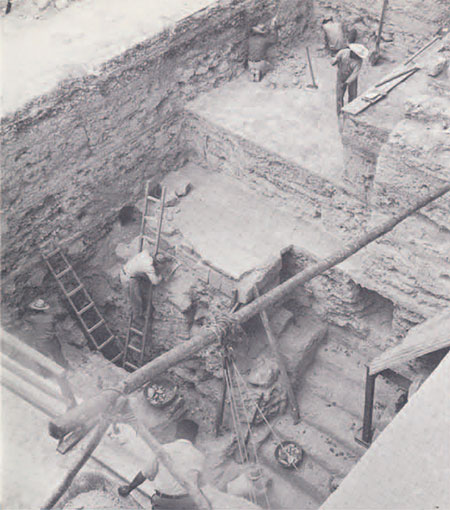
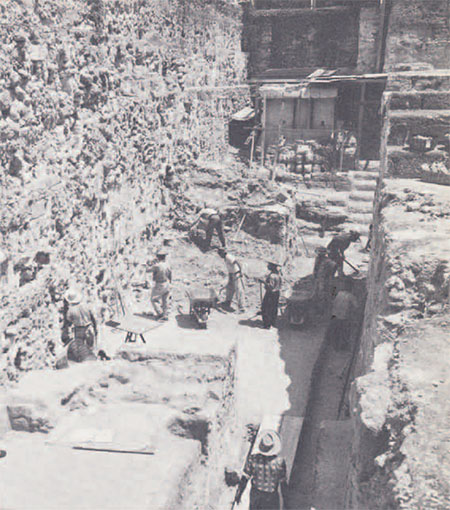
By the end of the 1962 winter season, the third one of work on the Acropolis, the 140-foot long central trench had already done much towards clarification of early details. The main trench and ancillary trenches have so far revealed twenty-three buildings underlying the final stage of the Acropolis (that is, the latest floor and the buildings directly associated with it). Thirteen Acropolis floors have been penetrated to date. As was expected, the Acropolis proved to be a highly complex product of many centuries of steady growth, of abandonment of an old floor and the buildings on it, the laying of a new plaster floor and the construction of new edifices and a great stairway down to the North Terrace below, and so on, until around A.D. 600, the Acropolis culminated in its final form. By the end of the 1962 season, it had become apparent that, in cutting down through the massive superimposed constructions, we were no longer encountering Classic polychrome potsherds in the construction fills. Nor were we still finding the cached offerings of eccentric flints and other materials so frequent in Classic contexts high up in the Acropolis. Nevertheless, as we cut farther down, the elaborateness and Classic appearance of the discovered structures were no less apparent. Things were not getting simpler, or cruder, or increasingly formative. Peculiar patterns of plan, evident in the Classic levels, were obviously present deep in the Acropolis. Similarly, the Classic trait of purposefully (ceremonially?) razing and mutilating the old structure before building the new over it was found to go as far back in time as our excavators have carried us.
One of the two oldest structures yet found had been exposed in a large test pit in 1960 by Edwin M. Shook. Its great central stairway was flanked by the mutilated remains of great masks. Whether this building was vaulted or not (the roof had been ripped off by the Maya prior to abandoning the building forever) was and still is a problem. The 1961 and 1962 seasons on the Acropolis have been devoted to trenching on an enormous scale to fill in the construction sequence between this stratigraphically early building (referenced to as Str.5D-Sub.1) and the final, late Early Classic stage of the Acropolis. What faces us in 1963 is the carrying of the trench and the record of all that it intersects to bedrock. Once there, will we find the beginnings of the Acropolis and perhaps of formal, elaborate ceremonialism itself at Tikal and conceivably in the lowlands in general?
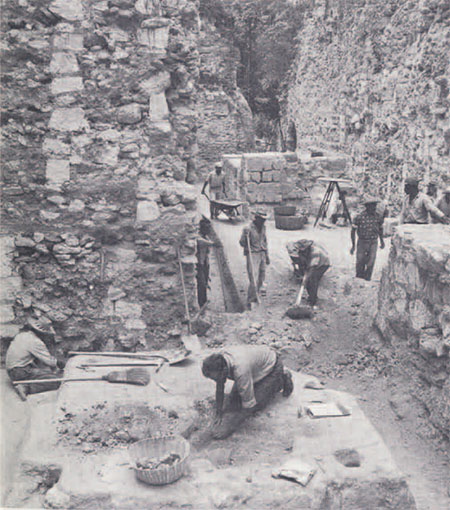
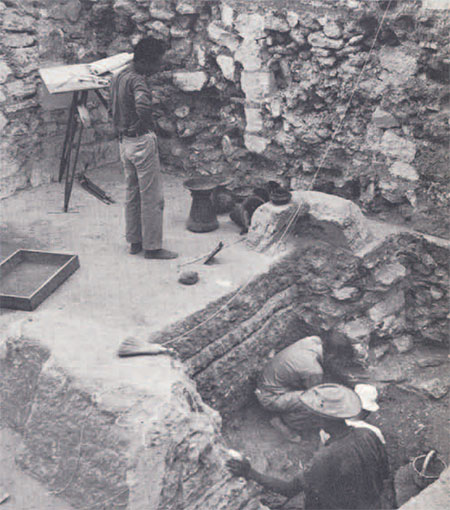
Work during these past two seasons has been within what is usually referred to as the “late Pre-Classic.” Where we are in time is largely determined by the ceramics encountered. Late Pre-Classic pottery is quite unlike the general run of Early Classic pottery. Late Pre-Classic pottery is best known for its waxy or soapy feel, for its complex profiles, and frequently for close-set parallel wavy lines on its exterior or interior. There is an intermediate ceramic phase between the Pre-Classic and Early Classic called Proto-Classic, in which one outstanding feature is the use of four symmetrically placed swollen mammiform feet. In the deeper levels of the Acropolis, structure fills (earth, rubble, old trash, and so forth) consistently lack sherds identifiable as Early Classic. As we excavate, the sherds from the fill of one building platform or floor are segregated from those from the fill of the succeeding platform or floor. Relative dating comes about through the identification of the latest pottery in each fill. The assumption is that, if the latest pottery in the fill of a building is Proto-Classic, then the structure was built no earlier than the time of breakage and discarding of such pottery and probably (if the fill sample is large enough) construction was contemporary with the use of such pottery. With our fairly specific knowledge of the developmental sequence of lowland Maya pottery, it is possible to date ceramically various points in the Acropolis construction sequence. For instance, there is fairly good evidence from other sites that Proto-Classic tetrapod mammiform vessels were produced in the first few centuries A.D. and that Late Pre-Classic pottery was made prior to this.
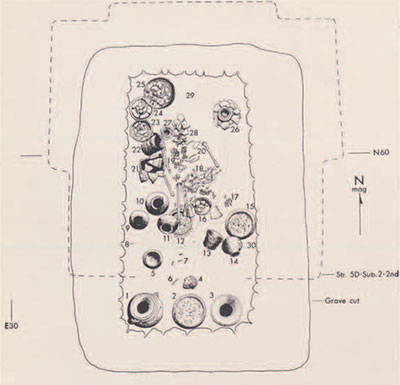
However, we were still faced by the strong possibility that the fill used, say, in a building platform, had been brought to the North Acropolis from very much older construction debris dumps or even occupation middens, and that pottery current at the time of building the platform need not have entered into the fill itself. Bits of charcoal collected from this same fill could of course be run in our Carbon-14 laboratory for an absolute date. But what actually would the result “absolutely date?” First of all, it would provide an average date for cutting all the trees that produced the wood that was burnt and which somehow eventually entered the source or sources of the fill brought to the Acropolis and used in the particular platform. If our C-14 result was, say, 300 B.C., we could only conclude that the building was constructed no earlier than this and in fact at any time after it, but always keeping in mind what structures, what pottery, and what C-14 results were stratigraphically above the platform. And could we preclude the possibility that a C-14 date on fill charcoal from a building above and thus later than the platform would not be older than the hypothetical 300 B.C. date from the platform?
Where we were in absolute time at major levels in the excavation was becoming a very worrisome problem. The discovery of certain specific features however could solve the dilemma. We might with luck locate a platform whose pole-and-thatch building had been burnt and the remains left at the time of its abandonment and the start of new construction. Radiocarbon analysis of the charcoal would give us a good control on when the building was erected or when its thatch roof was last renovated. Similarly, the location of a pit cut into a floor of a building during its terminal days and containing the charred remains from ceremonial fires could give us a date that would be about contemporary with the building activity that immediately followed such ceremonies. One problem however would be to make sure that the wood burned in such a terminal ceremony or sacrifice was not a tropical hardwood with centuries of growth (the core wood from a log of such wood will give a very much earlier date than the wood close to the bark). Better yet for our purposes, would be a building that burned and collapsed on a mass of contemporary pottery. If we could date such pottery “absolutely,” the pottery when found elsewhere would have in a very real sense a built-in radiocarbon date for its manufacture and use.
But perhaps the most useful discovery would be a tomb in which a lot of truly or roughly contemporary pottery and other materials were set on the death of the buried individual. We would have the grave traits to consider, along with pattern of layout of offering, as well as the method of disposal of the body. If charcoal, by some manner provable as contemporary with the burial, could be recovered from the grave, a lot more than pottery could be firmly dated. The tomb would either be found to have been cut into an old floor or structure just prior to building a new structure; or the tomb might have been cut into the structure during its use, the floor then patched, and the structure continued to be used. In either case, the structure and its various floors, and the structures elsewhere on the Acropolis on these floors could each be given an excellent “fix” in time and within the ceramic continuum of Tikal as a whole.
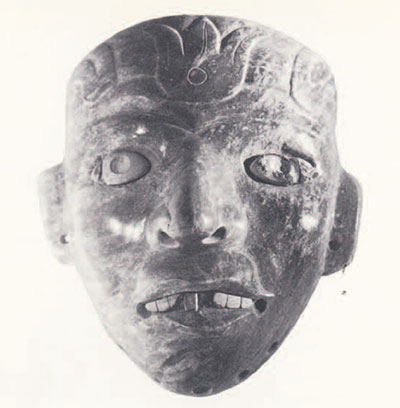
A few days before Easter, which incidentally is the local labor holiday, the first indications of the stratigraphically deep tomb appeared. It was late in the season. We were miserable in the annoying steady drizzle of that particular week. Our sections had been carried down to the thirteenth oldest Acropolis floor, which supported the early building found in the 1960 test pit. We had reached for this season as a logical stopping point which happened to coincide stratigraphically with what the clue pointed to, namely, the long awaited and, by that time, desperately needed tomb. Still, the prospect of having to dig down to it ourselves (the two of us and whoever of the Project staff were not to depart for a brief Easter vacation) was something to be considered.
By the time the holiday had begun, we had determined that the tomb had been cut through the tenth Acropolis floor back through time, and that the tomb and the floor cut had been obscured by a platform, nine feet square, which was covered by a later platform, necessarily somewhat larger but of essentially the same form. The apparent tomb cut was actually larger than the earlier platform and, where it was exposed in front of the platform, the cut had been neatly patched by a plaster surface. Both platforms had been painted red. Each had carried a pole-and-thatch building. The burned remains of the latter were found buried in front of the platform in a curiously sealed pit ( this was an additional dating dividend). Moreover, these superimposed platforms were directly in front of the 1960 early building, Str.5D-Sub.1, but on the latest three floors added about this important building during its use. The tomb (the apparent size of the cut in the floor argued that it could be nothing else) would therefore date from a time relatively late in the occupation of Str.5D-Sub.1.
The tomb should then fall in time between the date of the construction of this important building and its eventual razing and burial. South of the two superimposed platforms was a long series of major building substructures that were built during the same time span as Str.5D-Sub.1 and the small sequent red platforms directly fronting it. These building substructures were associated with polychromed stucco mask-flanked stairways that led down to the North Terrace and Great Plaza below.
The latest platform overlying the anticipated tomb was planned, sectioned, and photographed. The weather improved fortunately but the bodily shock of wielding picks and shovels dissipated less quickly. The excavation debris was piled as close as feasible with the expectation that the returning workmen on Monday would wheel it all away (with some amusement, they did). The earlier platform was soon fully exposed and it too was recorded in plan, then cut through to expose its sectional construction, then demolished and dumped nearby. The rectangular cut into the tenth Acropolis floor had finally been exposed. Its long axis was north-south, measured about eleven feet, and occurred, as previously noted, at the base of the stairway leading up into Str.5D-Sub.1. During the use of that most important building, someone of consequence had died–presumably a ruling priest–and had been buried at the foot of what may have long been his primary temple.
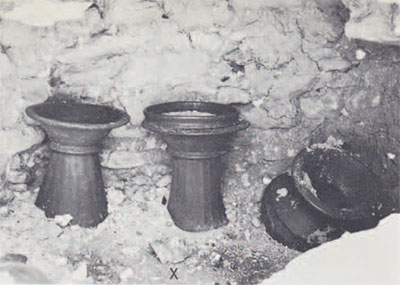
By this time, we were exhausted. The trench is so deep that only the sun, heat, and limestone glare enter. At this point, Marshall and Kathleen Becker dropped their work among ancient Tikal house structures and joined our somewhat maddened team. It was decided unilaterally that Mr. Becker would have the honor of excavating the tomb proper (while we recorded) if he aided in extricating the seemingly solid boulder fill packing the old excavation through the floor. We were no longer so confident that a tomb lay at the bottom of the pit. Reluctant muscles had just about quieted the reasoning brain. Both Mr. and Mrs. Becker turned to and, sparked by their enthusiasm, we started heaving out the rocks, dirt, and boulders. The trouble was that we had no assurance that all of us wouldn’t find ourselves momentarily plummeting down into the tomb if it was hollow and if in fact it existed. The fill was handled more and more gingerly as we proceeded down. Eventually, the clue appeared. Trying to span the excavation with outstretched legs to avoid weight on the center line of the old pit, we noticed loose earth trickling down below and disappearing. A void had to exist directly beneath us. Some type of roof was there. And one couldn’t be sure that it wasn’t about to collapse and smash all that we had hoped to recover.
As it turned out, a portion of it had already collapsed, fortunately for some cause other than our probing. The central line of the tomb was spanned by large roughly rectangular capstones, as though possibly the tomb was vaulted. The gap left by the ancient fall allowed us , by practically standing on our heads, to peer down into the gloom of the chamber. At the south end of the chamber stood three immense red pottery vessels, two looking somewhat like fire hydrants. Directly north, on the chamber floor, face up, lay a solid jade mask, human and naturalistic. That somehow made up for our labor. Whatever else occupied the chamber (for it to be a tomb, we needed a skeleton) must lie beneath the fallen roof material, although here and there along the bases of the chamber masonry walls we could see fragments of red and black pottery vessels. It was clearly time to stop and think.
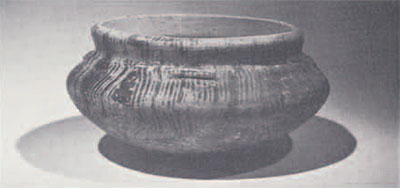
The first move was to set up horizontal and vertical controls necessary to plan and section the chamber and its contents. Nails and lines were strung at convenient points and their locations accurately plotted on graph paper. Everything that would be found could be plotted in relation to these stable points, then removed, after being identified on the plan. Becker nimbly fitted himself into the chamber and went to work with a finesse gained from considerable experience in graves elsewhere at the site. We plotted and photographed locations as he exposed them. Working with brushes and penknife, Becker gradually worked his way north. First, the shell inlays for the teeth and eyes of the mask were located, then a few finger or toe cones, and more and more dark red cinnabar-impregnated fluff that appeared to be the remains of textile. Further pottery came to light, all monochrome, and some, like the large vessels in the south part of the tomb, of a strong Pre-Classic cast. In the center of the chamber, the brown fluff was heavy and was found to overlie and underlie human bones and one vessel in which human pelvic fragments occurred. A nearby bowl contained a thin layer of painted stucco, suggesting that the pottery bowl had supported a stuccoed gourd. Among the fluff was discovered a stingray spine, then a tubular jade bead, and finally fragments of a once large perforated Spondylus shell, the interior of which had been scraped to reveal the valued orange of the shell. More and more pottery came to light. The textile remains were traced farther and farther north. This fluff consistently overlay and underlay the human bones. Arm, hand, foot, pelvic, and vertebral bones were cleared and plotted. The lower leg bones were found just south of the pelvic fragments. North of the latter were vertebrae and the right and left arm bones. Eventually there could be no doubt that entirely missing were the femurs, or thigh bones, and the entire head including lower jaw and teeth. Perhaps for some odd reason they had been removed during the funeral ceremony and set aside among the vessels packing the northwest portion of the chamber floor. Becker turned his attention to the,. These were largely red dishes of fine, simple shapes. Some were nested, one above the other. The missing parts of the skeleton were momentarily forgotten as the dishes were removed. Between some of them, lining the dish bottoms, were many tiny charged slivers of wood, more than enough for two good C-14 samples, and thus hopefully a splendid temporal check on the tomb and everything to which it could be proved to relate.
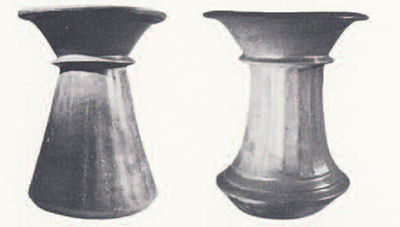
The head and thigh bones never did appear. The tomb yielded twenty-six vessels, some of magnificent size and proportion, as well as a jade mask of truly incomparable size and quality. Together with the stuccoed material, the stingray spine, jade bead, and Spondylus shell, we additionally had an incomplete skeleton. It was also quite clear that the tomb was in fact vaulted. This, it was realized, could well prove to be the earliest, yet detected use of the vault.
By the end of the summer of 1962, there was time to sit down and consider really what Burial 85 amounted to, both within itself and beyond. The carbonized wood slivers from the tomb vessels had been identified as pine, a relatively short-lived tree, the cutting of which could not have been very much earlier than the installation of the tomb. The burned pine was analyzed at the University’s C-14 laboratory. The original determination allowed a third century B.C. date; this was subsequently raised in time by recalculation, with the result that Burial 85 appears to have been made about the time of Christ. The tomb pottery has been carefully studied by the Project’s ceramist, Dr. Patrick Culbert, who indicates the whole lot to be clearly part of the local Late Pre-Classic ceramic complex. In overall study, we find no contradiction of what seemed probable in the field, namely, that the mature male in this tomb was a “bundle burial” without his head or thigh bones. These parts could well have been retained by the survivors as relics. It is almost certain that this is a primary burial, that is, that the individual was interred in the flesh. Presumably the grisly chore of severing the head and upper legs was conducted somewhere else than in the grave itself. The dark fluff so widespread over the tomb is the remains of the wrappings. The trunk appears to have been seated within a vessel and the whole wrapped, with the lower legs placed vertically against the stomach. This bundled, mutilated personage was set in the chamber facing south, the same direction as the small red-painted platform that was built over the tomb but. What then of the jade mask? Various peculiarities of tis position and that of the shell dental inlays do suggest that it could have been originally attached to the bundle itself, possibly as a substitute for the individual’s head. At some point in time, the bundle fell backwards towards the north, spewing its contents over the tomb floor. The mask, if attached to the bundle, must have broken off previously, for it lay south of the original sitting position of the bundle. Its fall conceivably threw the bundle off balance, causing the latter to fall to the north.
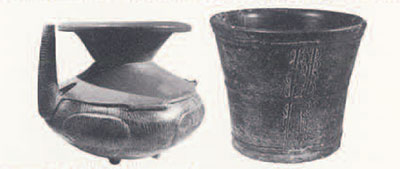
The date obtained from this tomb has been sustained by two others: one obtained on what are believed to be pole-and-thatch material from the latest of the two superimposed platforms over the burial; the other, a pit dug into the room floor of Str.5D-Sub.1, and wood burned within it, presumably just prior to the abandonment and burial of this whole important early stage of the Acropolis. However, the heavy rubble and earth fill, at some points sixteen feet thick , which was placed over these structures to ballast a new floor and a new Acropolis produced a great deal of charcoal, some of which was analyzed in the C-14 laboratory. The result was, surprisingly, about three centuries earlier than the tomb date and others noted (which we trust to be real). This terrific discrepancy (various others have appeared in the Acropolis fill series) illustrates how serious would be our error if we were unfortunate enough to have to depend entirely on C-14 results obtained from such inherently uncontrollable fills. Yet this is often the case in Mesoamerican sites. Regrettably, the tendency has been to employ dates so derived in interpretation as current dates, that is, that they do in fact indicate the times of deposition of the respective fills from which the charcoal samples come. If discrepancy was on the order of a half-century, or even a century, the matter would not perhaps be serious. But if the implications of out “test-case” discrepancy of three centuries are applicable elsewhere but not clearly allowed for, the risk is great of thoroughly distorting all conclusions dependent on time and correlation.
Burial 85, once in proper ceramic and chronological perspective, can tell us a great deal. Burial 85 extends use of the vault back some three centuries in time. Perhaps five hundred years separate it and the otherwise earliest signs of relic retention (see Expedition Vol. 4 No. 1, 1961 and its report on the headless individual in a late Early Classic Burial 48). The use of the mutilating stingray spine, the scraping out of Spondylus shells and their use as pendants, and indeed the employment of sumptuous offerings for the dead are major and minor traits that can now be proved to extend centuries further back in time than previously demonstrated. The individual was important, so important in fact that parts of him were considered sacronsanct. It seems hard to avoid the conclusion that he was just as important as the people later entombed at Tikal. The latter probably rightly have been seen as “priest-rulers.” The implication of exceptional status and authority, even wealth, is equally applicable in the case of the Burial 85 personage. In other words, society and its control may well have been the same at this relatively early date as they were later during so-called Classic times. Certainly the spot chosen for his interment was central for Tikal as it then existed. While by Late Classic times, the religious precincts of Tikal had been spread widely with linking causeways, there is every reason to believe that the facilities for religious, if not social, control were concentrated on the North Acropolis during the Early Classic and Pre-Classic times.
Acropolis construction at about the time of Christ were large, magnificently embellished with polychromed stuccoed masks flanking stairways and equally flamboyant upper facades. It is still uncertain whether or not any of these early buildings were roofed by vaults. Contemporary architects certainly knew the principles involved but as yet the vault may have been exclusively a tomb feature. Perhaps only later and then, in a daring way, were they used on buildings. One should also note that one of the most outstanding elements in Classic architecture, the so-called apron molding, is present in these early levels. What we do lack in this general picture of early “Classicism” is evidence of hieroglyphic inscriptions and stelae and altars. We have a few fragments of stone sculpture from early fills; one surely is a substantial fragment of a full-round carving of a squatting human or animal figure. This is not to say that we can definitely preclude stelae, altars, and inscriptions in this part of the Maya world at a time earlier than that characterized as “Early Classic.” Occasionally sherds will be found to be decorated with things perhaps describable as “glyphoid.” but something much more substantial will be needed to prove that the personage in burial 85 once commanded the carving or painting of a text, or the erection of a plain or carved stela. One can only say that it would be strange if he did not, considering the context of ritual and aesthetic sophistication in which he operated.
In 1963 we return to Tikal to continue the Acropolis trench (among other things). The work from 1958 to 1960 in the Great Plaza and North Terrace, fronting the Acropolis, showed us bedrock at various points. If bedrock does not rise or fall as it moves north beneath the Acropolis, we can say that some fourteen feet of still buried construction awaits exposure in 1963. The Burial 85 tomb was cut down into two earlier structures or floors about which we now know nothing. There is every reason to expect that the extraordinary industry responsible for the six hundred years of construction, which we have already cut through, will hold true throughout the still unknown early portion of the Acropolis sequence. How much time intervenes between where we are now and the first human activity over bedrock in the area of the Acropolis? Forced to the wall of prediction, we can only say possibly a few hundred years.
Our first task is to expose a developing “ceremonial complex” in all possible, fully controlled, physically interrelated detail. Conceivably, the lowest level of the Acropolis will be found to be so generalized architecturally as to make it difficult to speak of it as “ceremonial.” But with time, as structure and floors were piled on earlier ones, a clearcut pattern leading to “Classicism” amy be seen to emerge. Possibly then we shall be in a position to approach realistically the question of whether the lowland Maya made their own straight path to unquestioned greatness or whether they brilliantly traveled a deviously influenced route with complex origins elsewhere in time and space. To be able to document, as in the Acropolis, long incremental development is alone worthwhile. Yet, to be able to account for it, while following on the first goal, is, one suspects, the prospect that keeps us going.
